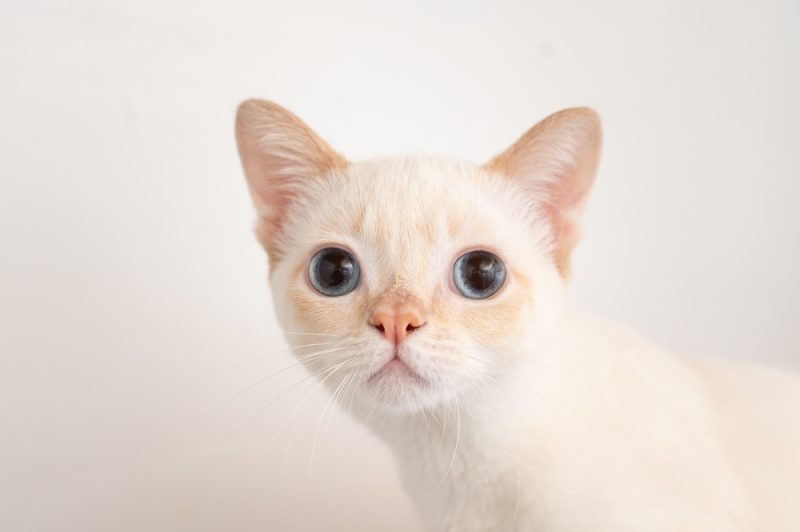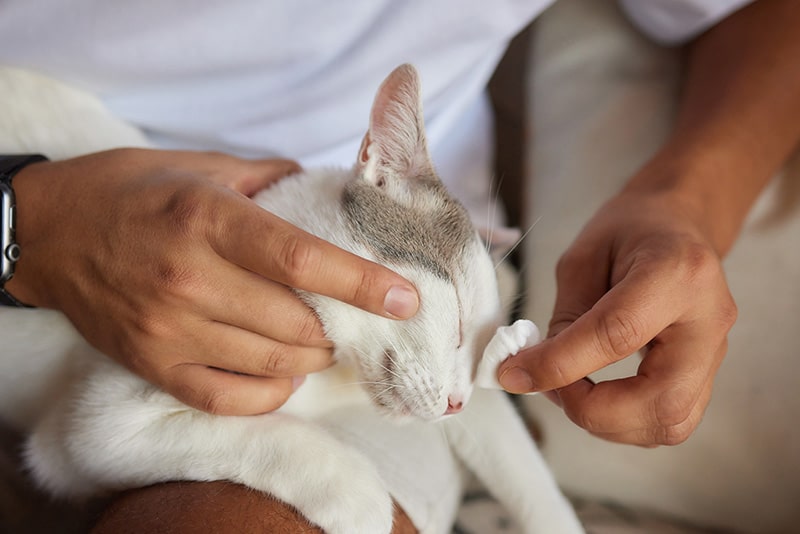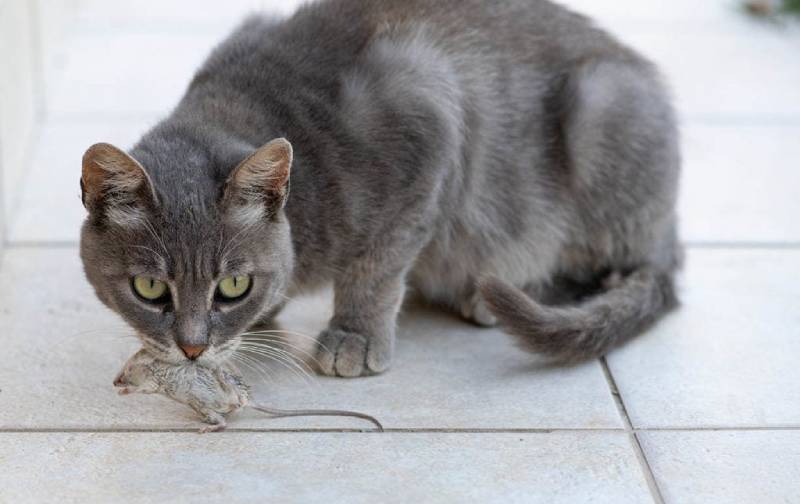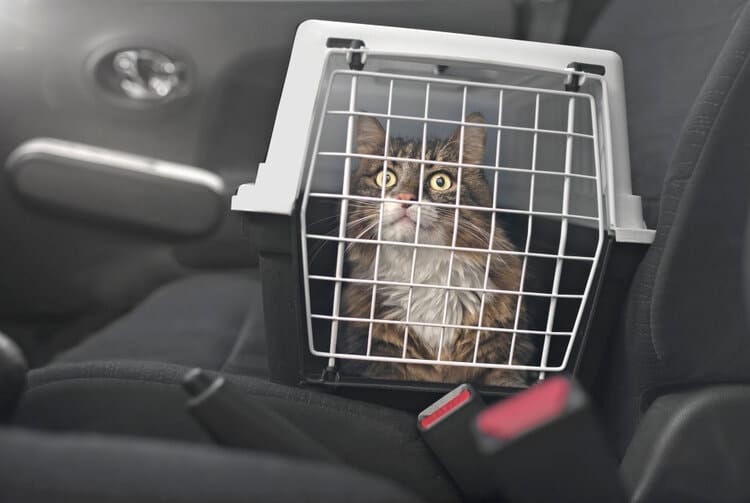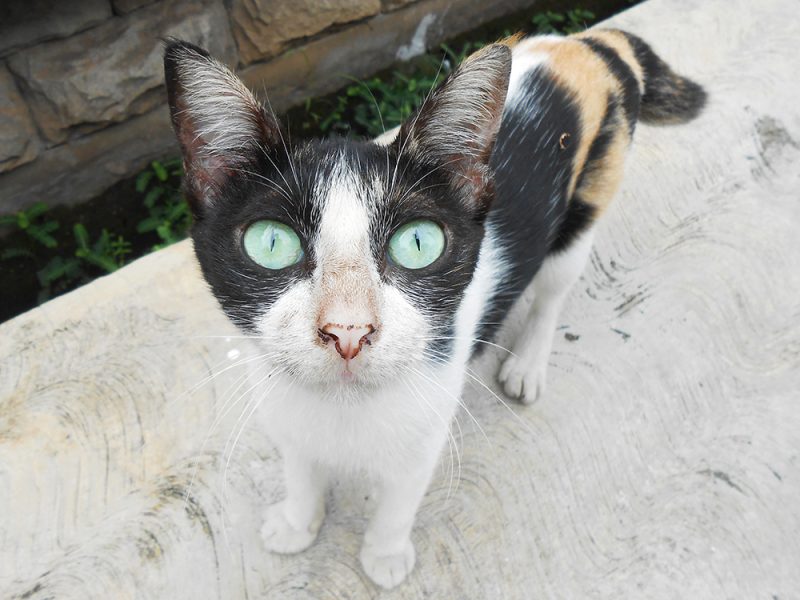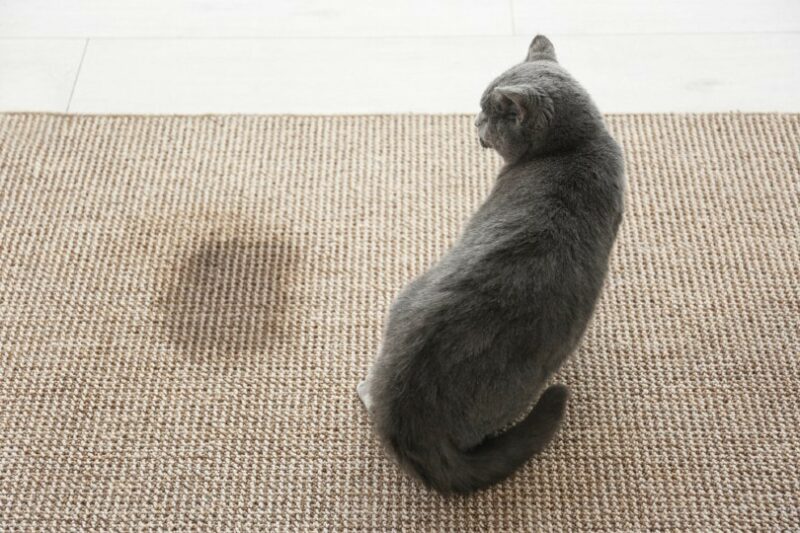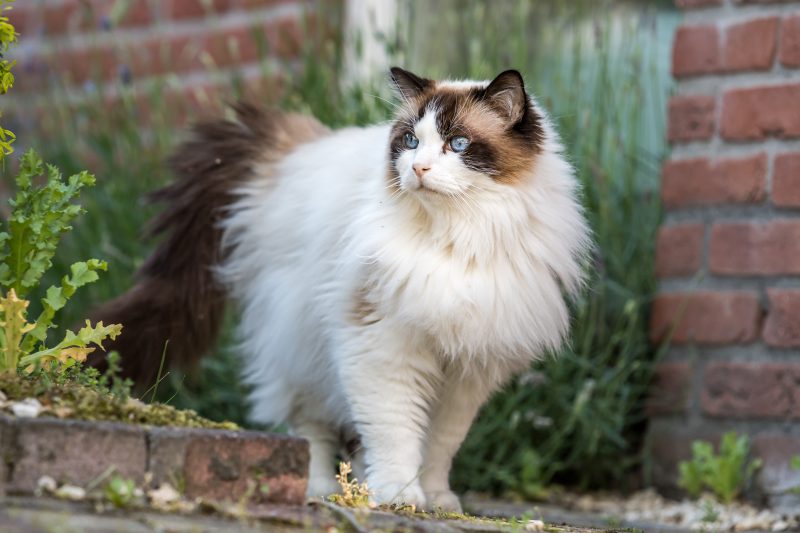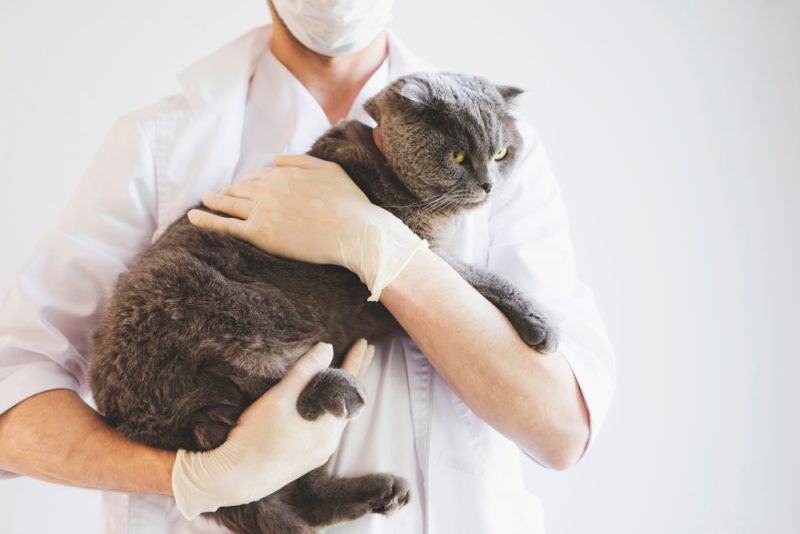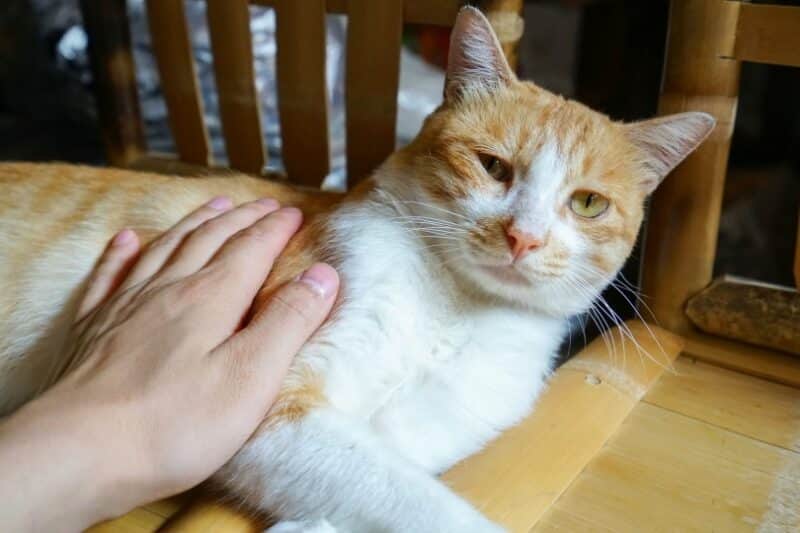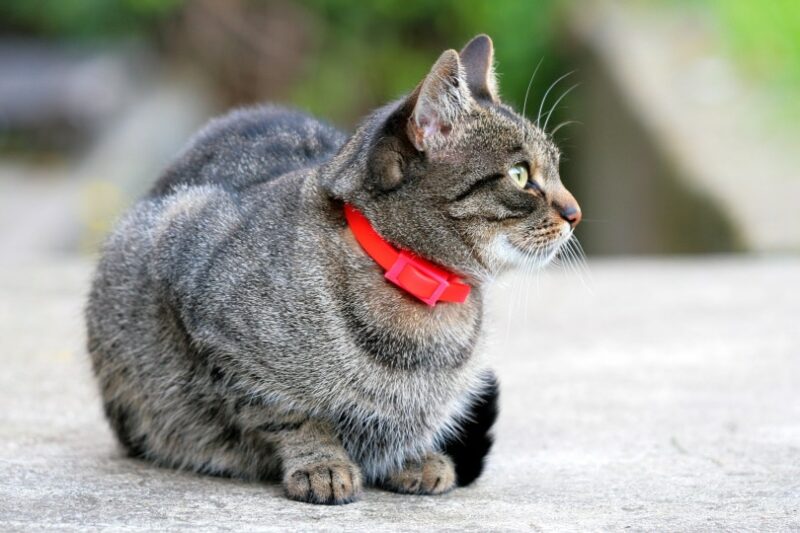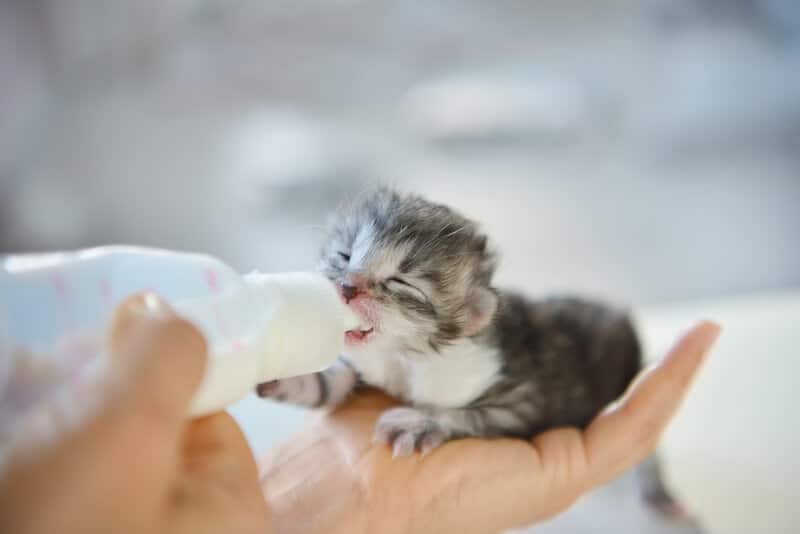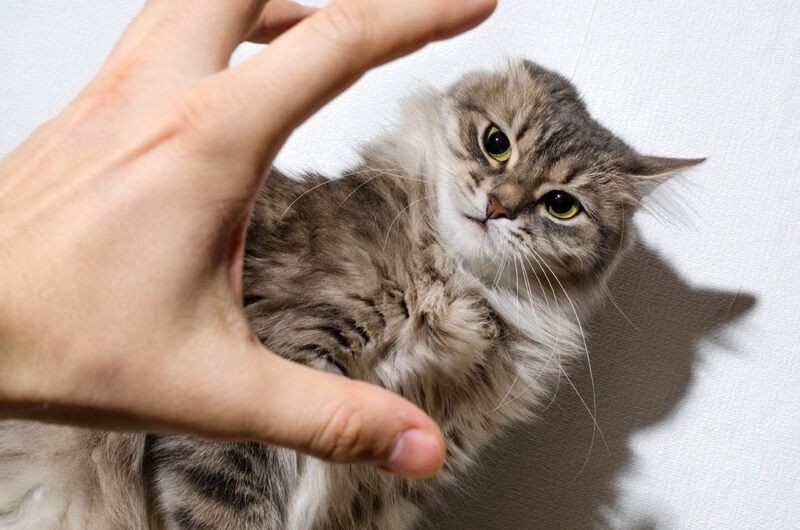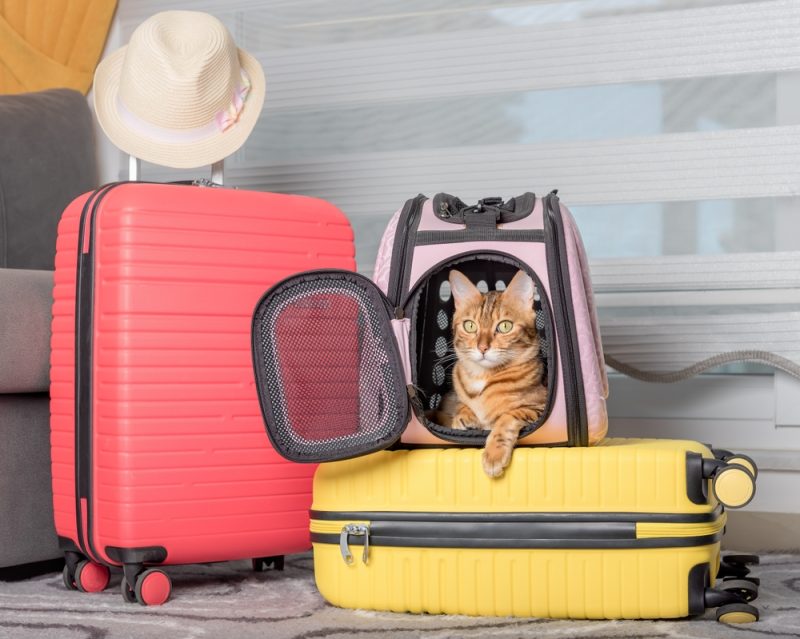You’ve likely heard the term “hydrocephalus,” whether in relation to human babies or animals. You may even be familiar with the tell-tale dome-shaped head that often accompanies this condition. But there’s more to understand about hydrocephalus in cats than just the physical appearance. Hydrocephalus can be a complex issue that requires lifelong management.
For more about what causes hydrocephalus, the other signs that can accompany it, and what can be done about it, read on.

What Is Hydrocephalus in Cats?
“Water on the brain” is a common phrase for hydrocephalus because in essence, that’s what it is. To be more accurate, though, the nickname should be, “excessive water on the brain.” Normally, the brain and spinal cord soak in a small amount of cerebrospinal fluid, which provides nourishment and protection. It’s made in the hollow chambers of the brain (the ventricles), circulates around the brain and spinal cord, and then gets resorbed by the body.
When there is a problem either with increased production of this fluid or with the drainage of the fluid away from the brain, it can build up to excessive amounts, leading to the condition known as hydrocephalus.
The brain is encased by the skull, a sort of lock box that hardens with age. In young kittens, the bones of the skull are soft and pliable, allowing for expansion as fluid levels rise. This creates the pushed-out, or domed, forehead common with hydrocephalus. Unfortunately, as the skull starts to harden with age, the fluid has nowhere to go, which can put excessive pressure on the brain. This added pressure can lead to myriad clinical signs.
Not all cases of hydrocephalus in cats start in kittenhood. If the condition starts in an adult cat, their skull is already hard, so instead of a dome-shaped head, they start showing neurological signs first.
What Are the Signs of Hydrocephalus in Cats?
Let’s divide the signs of hydrocephalus between kittens and adult cats. Kittens typically have a congenital form, while adult cats will likely have an acquired version.
Signs of Congenital Hydrocephalus in Cats
- Rounded head
- Continual soft spot (open fontanelle)
- Eyes that look downward and outward
- Smaller size than litter mates
- Head pressing
- Walking in circles
- Incoordination
- Mental dullness
- Restlessness
- Blindness
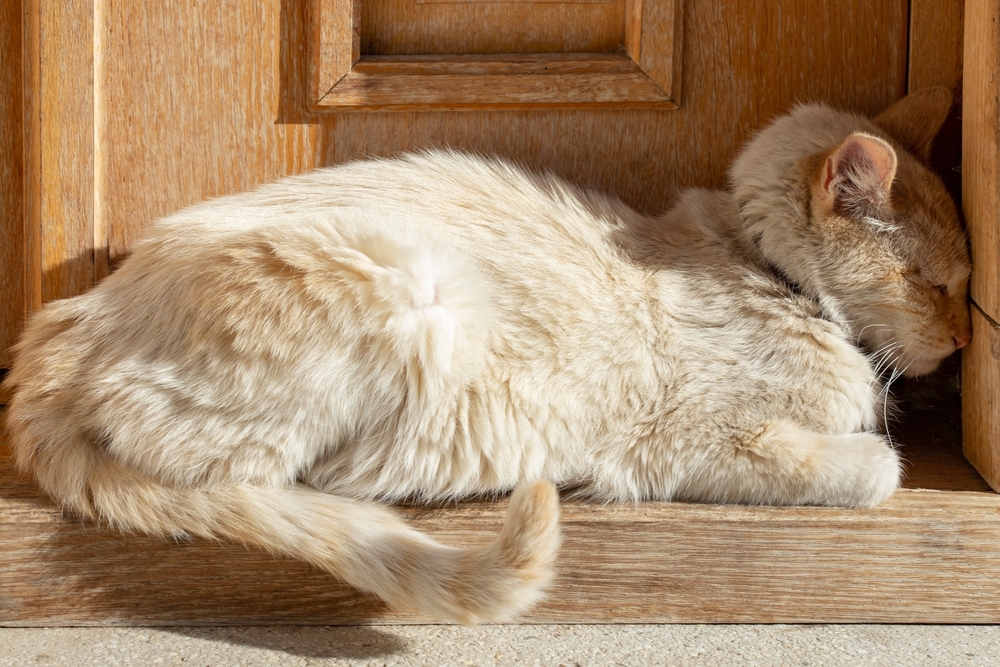
Signs of Acquired Hydrocephalus in Cats
If the cat’s skull has already hardened by the onset of hydrocephalus, it won’t likely take on the rounded shape and pushed-out forehead. But you will typically still see all the neurological issues, such as head pressing, restlessness, circling, incoordination, and even blindness. Signs can be variable due to the cause and severity. Anytime your cat experiences neurological signs that are out of the ordinary, see a veterinarian.
We suggest you contact a vet online if you need urgent advice.
If you need to speak with a vet but can't get to one, head over to PangoVet. It's an online service where you can talk to a vet online and get the advice you need for your pet — all at an affordable price!


What Are the Causes of Hydrocephalus in Cats?
Hydrocephalus can be either congenital (present at birth) or acquired. The former is more common and develops due to birth defects in the affected brain or skull.
Congenital Hydrocephalus
In affected kittens, hydrocephalus won’t be present at birth, but the defect that leads to it will be. As time goes by, fluid levels will start to rise, which will lead to clinical signs. Most kittens with congenital hydrocephalus present the signs when they’re a few months old.
Congenital hydrocephalus does seem to have a genetic component, as it’s found more commonly in Siamese and Persians. Kittens can also develop congenital hydrocephalus if the mother is infected with certain viruses before the kittens are born. Feline panleukopenia virus is the main culprit, but fortunately, cats can be vaccinated for this virus, making it a preventable cause. Exposure to certain medications, mainly griseofulvin to treat ringworm in the mother, can also be a cause of hydrocephalus.
Acquired Hydrocephalus
Hydrocephalus can develop in adult cats when anything blocks the drainage of cerebrospinal fluid. Head injuries that create inflammation or bleeding, infections that cause swelling, or masses or tumors can all be to blame. A feline infectious peritonitis infection is a significant reason for acquired hydrocephalus in cats.

How Do I Care for a Cat With Hydrocephalus?
Things that affect the brain are nothing to mess around with at home. You’ll want to see a veterinarian for a proper diagnosis and treatment plan when you start noticing any signs of hydrocephalus. Veterinarians can typically diagnose water on the brain with an examination and knowledge of the cat’s past medical history. If your cat has suffered trauma, be sure to tell a vet so they can look for other injuries in other areas of the body.
Along with an exam, the vet may choose to do X-rays, ultrasound, or a CT scan of your kitty’s head. They may also try to get a small sample of the cerebrospinal fluid to make sure there’s not an infection or something else occurring.
How Is Hydrocephalus in Cats Treated by a Vet?
If there is an underlying cause, such as an infection or injury, it will be treated first. Sometimes, that will also resolve the hydrocephalus. But more commonly, hydrocephalus will require lifelong treatment or surgery to completely correct.
Medications can be given to the cat to help reduce the amount of fluid and pressure on the brain. These typically help the animal feel better but don’t eliminate the issue. Surgery can help fix the problem in some cases, but it isn’t something that every cat owner is willing to take on.
Hydrocephalus can be a difficult thing to control, and some cats can suffer from significant neurological signs and even pain, meaning that euthanasia may be the best option due to quality-of-life issues.

Frequently Asked Questions (FAQ)
Can a Cat Survive Hydrocephalus?
Hydrocephalus does require treatment; otherwise, the affected kitty can’t survive. Depending on the severity and cause, some cats can do fine with continual medications and monitoring, with readjustments to treatment as needed. Other, more severe cases may not respond well to medications and instead, will require surgery.
How Do I Know If My Cat Has Hydrocephalus?
The most common thing that people notice in their affected kitten is a dome-shaped head, followed by neurological signs. Adults will also present with neurological signs, usually after an illness or trauma. See a veterinarian if you notice anything out of the ordinary with your cat’s appearance or behavior.
Is Hydrocephalus Painful for Cats?
Hydrocephalus can cause pain due to the increasing pressure on the brain. If left untreated, fluid can continue to build up, increasing the pressure and potentially, pain and other clinical signs.

Conclusion
Hydrocephalus, or water on the brain, is an uncommon issue in cats, but it does happen. Knowing what signs to look for can help you get your young kitten or adult cat the treatment that they need to live a better life. Be aware that hydrocephalus isn’t often cured but is treated throughout a cat’s life instead, with adjustments being made as needed.
Featured Image Credit: Casey Elise Christopher, Shutterstock
